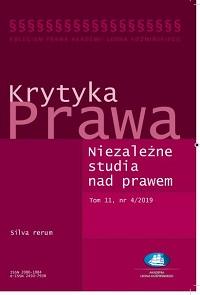The foreign administration of the Austro-Hungarian Empire (1867–1918)
Ivan Halasz
Czech Academy of Sciences, Institute of State and Law
2019 11 (1) Krytyka Prawa. Niezależne studia nad prawem
DOI 10.7206/kp.2080-1084.284








